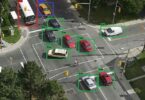Imagine this scenario: you have a lovely 54-year-old neighbor named Alice who’s saved all her life to ensure she has the best post-retirement life. Now, Alice gets the shock of her life when a successful phishing attempt steals all that money. Luckily, the bank detects this unusual activity and stops the transaction just in time to save Alice’s life-long savings. This is what cyber security is about.
The world has evolved, and the internet is now more connected than ever. Every internet user entrusts incredibly-sensitive data to digital platforms like social media spaces, shopping sites, health apps, and several others. While these platforms make daily activities easier, it also exposes people to numerous online threats. The consciousnesses of cybersecurity can help reduce this vulnerability for individuals, and it’s the same for businesses.
Cybersecurity professionals protect and prevent users against malicious attacks. Individuals with a keen interest in technology and a desire to make a difference can also find a promising path in cybersecurity. Baylor University offers an online computer science master’s degree to help future cybersecurity professionals who already hold a bachelor’s degree in computer science, mathematics, physics, and other related fields to equip themselves with relevant skills and knowledge. In this article, you’ll learn why cybersecurity is important because of its most recent trends.
Five recent technological trends in cybersecurity
There are several interesting trends in the cybersecurity space, including:
Internet of Things (IoT)
The Internet of Things (IoT) is becoming integral to individuals’ daily lives. It’s the interconnection of numerous devices such as smart home devices, health gadgets, habit trackers, and industrial equipment to the internet.
And while this makes life easy, it also makes personal lives susceptible to cyberattacks. How? The interconnectivity of devices in IoT means that a poor connection to the internet on one device could leave the other devices vulnerable to attacks. Besides this, IoT devices often lack robust security features, which makes them an easy target for cybercriminals. This is where cybersecurity comes in.
The cybersecurity industry is responding with new solutions designed specifically for IoT. These solutions include network segmentation, IoT device authentication, and data encryption in transit. There’s also the efficacy of fog/edge technology. All these help protect digital devices.
Besides these, the industry uses Artificial Intelligence and Machine Learning (ML) to recognize and respond to threats in real time. However, these solutions can only be effective when individuals and organizations do their part. This includes routine updates of their devices, changing their default password, regardless of how easy it is to remember, and deploying security software.
Multi-Factor Authentication (MFA)
Most online platforms and services now use multi-factor authentication to protect their users. This is why your online bank might ask for your password and fingerprint and still send an OTP before they verify a request. The goal of MFA is to provide additional layers of security that will reduce the chance of successful attacks.
The significant value of MFA is also prompting companies to integrate technological innovation into their services. This clears the way for several authentication factors. There’s the knowledge factor method, where the system might ask you random questions that only you will know. For instance, you might be asked questions like, “What’s the name of your first pet?” or “What’s your mother’s maiden name?” These questions are personal questions that a stranger wouldn’t know the answers to.
Another factor is the behavioral authentication that analyzes your unique movement characteristics to grant you access. An example would be an app asking for your signature or requesting for a voice identification before it grants you access. There are various multifactor identification methods that can ensure strong security for individuals.
Automotive hacking
The automotive industry is shifting toward technologically advanced cars. The industry is adopting tech advancements such as vehicle connectivity and electrification in advanced cars. This is evident in the likes of Tesla and Volvo. And while this significant evolution of the industry has advantages, it also exposes automobiles to automotive hacking because the cars are now connected to the internet more than ever.
Modern cars are like computers on wheels, and they can be hacked like computers. Hackers can take control of a vehicle’s system remotely, and this can jeopardize the security of passengers.
To try and tackle these problems, automotive and cybersecurity industries are implementing certain features. Car manufacturers are building stronger security features into their vehicles. These features include intrusion detection systems, secure software updates, and encrypted communications. They also keep open communication with cybersecurity experts, so they offer significant guidance where necessary.
However, consumers should also be aware of the digital risks associated with their vehicles. This is why they must regularly update their vehicle’s security software, secure onboard WiFi networks, and be wary of connecting untrusted devices to their car’s systems.
The vulnerability of cloud computing
Cloud computing is a popular system of storing and managing data. However, this system can be vulnerable to several security threats. Some of its vulnerabilities include misconfiguration, data breaches, and inadequate access controls.
The cybersecurity industry is coming up with several solutions to fortify the security of cloud computing. There are safety practices, such as tokenization, encryption, and key management practices. Companies can also prevent unauthorized access with Identity and Access Management (IAM) and can access real-time analysis of security alerts with Security Information and Event Management (SIEM). These measures are designed to secure companies and individuals using the cloud system to store their private data. These users must also ensure they understand the security measures and instructions that cloud providers like Amazon and Google provide in order to secure themselves. Besides that, they should also configure their cloud services correctly, regularly audit their security settings, and employ security practices only when handling data.
AI-powered cyber attacks
Artificial intelligence can be a double-edged sword in cybersecurity. On the one hand, it helps detect and respond to cyber threats swiftly; on the other hand, cybercriminals can use it to launch sophisticated cyberattacks.
Cybercriminals can use AI to automate their attacks or find vulnerabilities in the system faster. Cybersecurity professionals are developing advanced AI algorithms that can detect anomalies, identify threats, and predict potential attacks to stay ahead of these threats.
Conclusion
The advent of all things technology has made internet vigilance vital. The introduction of high-end tech innovation also translates to high-level cyberattacks. Cyber security specialists work on better ways to improve the security of individuals and companies online. However, it’s not a one-man show. Individuals must also stay vigilant, informed, and proactive about their digital security to complement the efforts of cybersecurity professionals.







